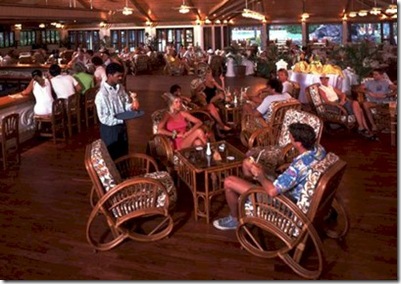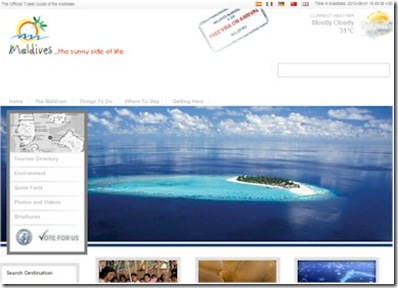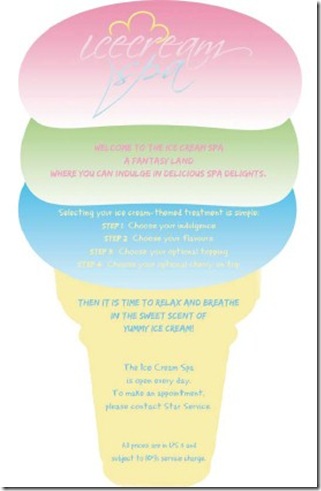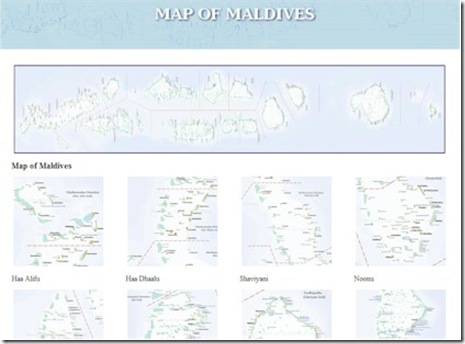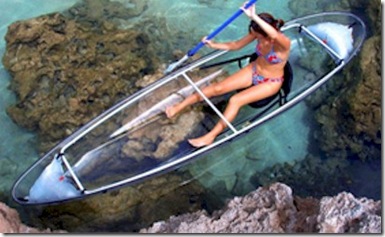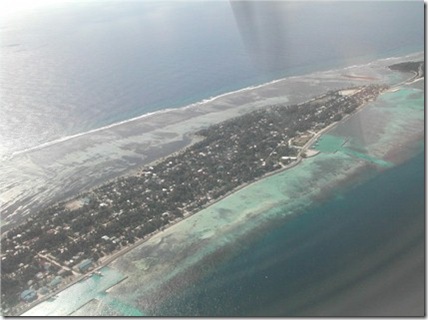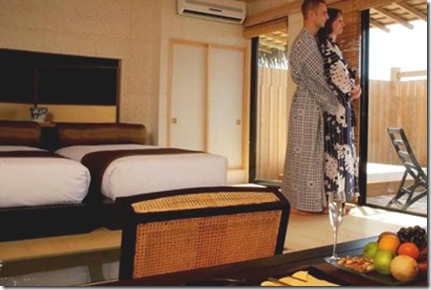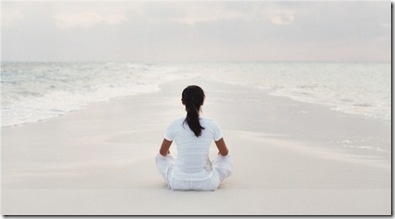Maldives Complete has highlighted the most ‘exclusive’ island with the fewest guests accommodated, but what it you are a social animal who craves the teeming company of hordes at the other end of the spectrum. Then Sun Island is the place for you with its 350 rooms. That said, you don’t get the sensation of ‘crowding’ per se because the island is so big at 600k square/metres (11th largest of the Maldive resorts). The size put Sun Island in the lowest quartile of ‘Population Density’ with one guest per 2779 square metres. That fact was underscored when I looked through nearly a thousand visitor snaps of Sun looking for one which showed lots of people and struggled to find one. Another advantage is that it is a good resort to target for last minute availability and deals since with so many rooms there is a greater chance that there is unsold inventory.
Best of Maldives: Online Authority – Visit Maldives
If you type ‘maldives’ into a search engine, then the prized first top selection that will appear is the www.visitmaldives.com. Visit Maldives (‘The Sunny Side of Life’) is the official site of the Maldives Tourism Promotion Board. It is very comprehensive covering aspects of the country, activities, transport, etc. And now it is even slicker, crisper and more complete with this past week’s long anticipated revamp of the site. It has a few minor glitches which are likely teething pains to be worked out in short order.
MTPB have added some filtering to their resort listing allowing people to narrow their search by budget, distance from airport and number of room. The resort listing is more detailed than it used to be with more pictures and vital stats.
Definitely one of the first online ports of call for anyone investigating a Maldives visit.
Best of the Maldives: Kids Club – Sheraton Full Moon
Speaking of the kiddies, many resorts now feature ‘kids clubs’ with a range of activities and child minding to tend to the specific interests of the younger set for families who want to come to this paradise all together, but have slightly different sentiments as to what makes a great vacation day.
Full Moon resort has recently completely a major renovation under the new auspices of its Sheraton owner which includes a big investment on an ‘Adventure Club’ for children. Anyone who was familiar with the old resort and especially anyone with children should check out the new refurb…
- “The launch of the Sheraton Adventure Club further proves that Sheraton Maldives is the ideal location for families. Parents can enroll children, ages 4-12, free of charge. There, the children have a fun-filled day of activities including beach games, scavenger hunts, coconut bowling and more! The Sheraton Adventure Club also teaches the children about the local Maldivian culture through traditional music & dance or mini lessons on Dhivehi, the Maldivian language. Children can also entertain themselves by climbing the jungle gym, discovering the hidden cave, or playing sports games on the Nintendo Wii. There are various schedules from 09.00 – 17.00 daily, so parents can rest assured that their children are in the caring hands of the fully trained staff.”
Best of the Maldives: Kids Spa – Conrad Maldives Rangali
When I first considered doing a web site devoted to the Maldives, I had thought about focusing it on families (‘Maldives for Families’). While a renowned diving and honeymoon destination, it was less thought of as a place for kids. In fact, some a few resorts do specifically exclude children in an effort to maintain even greater calm and tranquillity for their guests and more resorts do not allow them in the water bungalows out of safety considerations. Nonetheless, the placid waters (little current in the lagoons, shallow water), the tiny size (hard for a child to roam out of earshot) and general charming and helpful nature of the staff do make it a wonderful destination for children.
And for those that want their kids to have more than the beach side fun and to enjoy the luxuriant pampering of their elders, Conrad Hilton Rangali has just the package which won the ‘Best Children’s Spa Menu in Asia’ award in 2009.
- “Aren’t kids meant to be grubby?…It’s the big new spa thing – teeny treatments. Jolly Beach in Antigua has introduced a range for six-year-olds and up: there’s a massage, facial and manicure combo called Little Princess Day, and a boys-only package of scrubs and pedicures titled For the Little Man (careful, lads – if anyone at school finds out, you’re dead meat). All that’s trumped by the Conrad Rangali Island in the Maldives. It’s opened an Ice Cream Spa for kids, with a Super Sundae Supreme body scrub and a Princess Me facial. Big drawback: the stuff’s not edible. Chiz, as that unwashed urchin Molesworth used to say.”
Best of the Maldives: Online Official Resort Mapping – Maldives Department of National Planning
Maps are a big thing for Maldives Complete. When you have 100+ resorts on a 1,192 islands a map is pretty critical. And the unique topology is one of the things that makes the Maldives a front runner contender for the ‘Seven Natural Wonders of the World’. One of my highlights of any trip to the Maldives is when the airplane finally arrives in Maldives airspace and the dappling of stunning blues start to appear in the ocean below.
Maldives Complete already features both Bing maps and resort maps on each resort profile as well as a unique ‘Deep Zoom’ version of the classic British Admiralty charts. Now, thanks to Francis Negrin once again, I have another to share.
The Maldives Department of Planning has posted its official atoll maps accompanied by an official resort listing on the web. Since Francis highlighted it to me a while back, I have found it extremely useful as the definitive source on resort status, names and geo information.
As Francis commented, “this collection of maps is amazing and the only worthwhile maps of maldives I have ever seen. it shows all the existing resorts with real and current commercial names shown in blue, and also in blue are all the islands set aside for resort development . It makes it easier to then go on google earth to see what the islands are like from above, or search the internet for news about new resorts opening (an otherwise quasi impossible task)… or to see what uninhabited or inhabited islands are near certain resort islands etc. and it is relatively up to date (2009).”
Best of the Maldives: Canoe – W Retreat
Many people worry that indolent isolation of the Maldives would be just too boring for them, but many resorts have rather robust water centres with everything from water skiing to parasailing. A lot of the offerings are quite standard – canoes, windsurfers, catamarans, banana floats. But the best boat we at Maldives Complete have come across is the W Retreat’s ‘Molokini’ glass bottomed canoe. A new dimension to paddling around the lagoon and probably the closest one can get to snorkelling without actually snorkelling
Best of the Maldives – 100th Post Special
|
7 |
Choice, Experienced, Diversity, Handicap Access, Room Types, Loyalty Programme, Dining Choice |
|
|
6 |
Golf, Wreck Dive, Turtles, Online Forum, Water Sports Centre, Longest Beach |
|
|
6 |
Voluntouring, Cinematic, Geek Activity, 2010 Calendar, Eco-Friendly, History |
|
|
6 |
Hip Entertainment, 2010 Eclipse, Spa, Wine, Buoyant, Service |
|
|
5 |
Biking, Dining Experience, Elevation, Running, Lacustrine |
|
|
4 |
||
|
4 |
||
|
4 |
Seating, Reefscaping, Library, Hot Drinks |
|
|
4 |
Celebrity Watching, Li-Lo, Shoe Boutique |
|
|
3 |
This piece is the 100th Maldives Complete post. When the site was inaugurated, I added a blog to the web site to provide a way to dynamically update and cover the more qualitative aspects of the resorts that could not be accommodated in the core database profiles. I included some special pieces that covered a few interesting stories, factoids and useful info, but quickly the blog gravitated to the vehicle to regularly recognize the resorts’ uniques and superlatives in a very broad and even quirky range of categories featured in the ‘Best of the Maldives’.
I’ve decided to celebrate the 100th post milestone with a bit of a retrospective review of the Best of the Best. The recognitions themselves are highly unscientific in the first place (though most of the feedback is that they are pretty spot on) so the aggregate tally will be even more so.
Another caveat is that while a number of ‘Best Ofs’ have been published, nearly as many remain unpublished. I continue researching them and posting them on a regular schedule, but have decided not to rush things or overwhelm the growing readership with too many too often.
This wealth of material has led to my next project which is to adapt all of it into a ‘Best of the Maldives’ guide book which has been spurred by interest and support from a number of corners.
Soneva Fushi tops the list with 5 published superlatives in total (including 1 I haven’t published yet), but Kurumba tops the overall list with 7 overall (including 5 not yet published). There is huge bias in this stat not because I have any particular affinity for Kurumba, but because I recently stayed there and was able to uncover all sorts of gems and special aspects that even Kurumba hadn’t appreciated that it had (eg. exceptional handicap access).
As a result, to help balance the score and to similarly ferret out all sorts of other unsung gems, I am currently planning my next trip to the Maldives in July to cover as many resorts as I can to get more research for both the site and the book.
All those with 3 or more awards so far are listed above.
Best of the Maldives: Largest Island – Equator Village
One of the defining characteristic of the Maldives are their miniscule islands, but if such diminutive scale is too claustrophobic for you, then maybe you want to consider the other end of the spectrum. The largest resort island (the second largest island in the whole country after Hithado in the same atoll) in the Maldive archipelago is Gan at 2,256 square km. That compares to an average across all the resort islands of about 200k square metres.
Gan’ s resort is Equator Village. Gan also has an extensive history which includes a British naval base established there in World War II and an ancient Buddhist temple.
Best of the Maldives: Japanese – Vadoo
If Zen is your thing, then Vadoo might just be another resort to consider. Vadoo has developed an entire Japanese experience including Ryokan style water villas designed and services by Japanese, Japanese Tea ceremony, and a traditional Japanese ‘Kaiseki’ dinner served at the restaurant or in room.
“The tea ceremony is a very special event in Japanese culture. The host spends days going over every detail to make sure that the ceremony will be perfect. There are various styles of tea ceremonies and it is recognized that every human encounter is a singular occasion, and so every aspect of the tea ceremony is savored. The ceremony takes place in a room called the chashitsu.”
Best of the Maldives: Zen – Cocoa Island
Today’s post is inspired by author and blogger Adrian Neville who is currently on a tour of the Maldives and tweeting about it as he goes. Earlier this week, he stopped by Cocoa Island. His tweets went…
“SevenMaldives: Cocoa is the Zen resort of the Maldives.”
“SevenMaldives: Cocoa: less is more when perfectly tended like a zen garden – interiors, landcape and cuisine. so so calm”
Master Adrian’s enlightened opinion is good enough for me.

